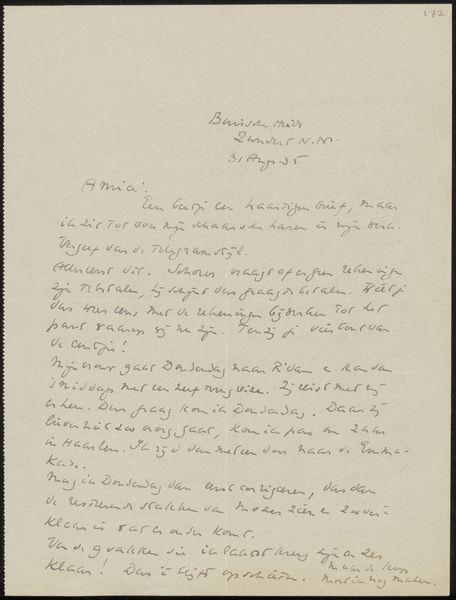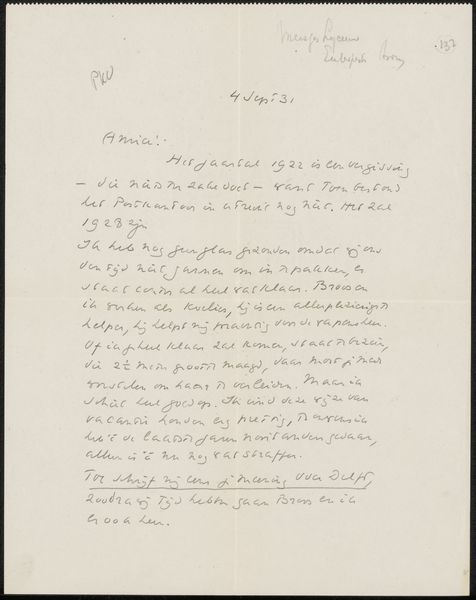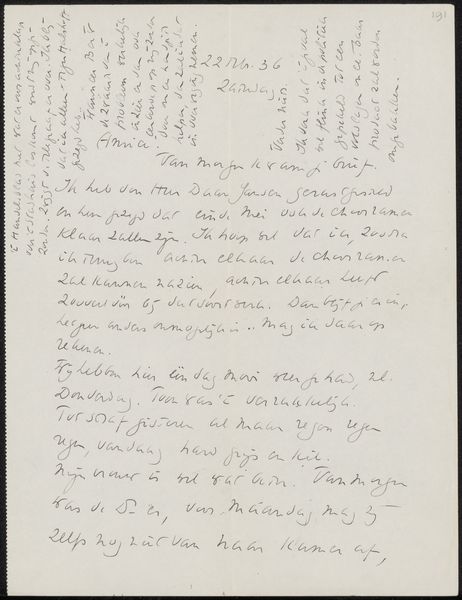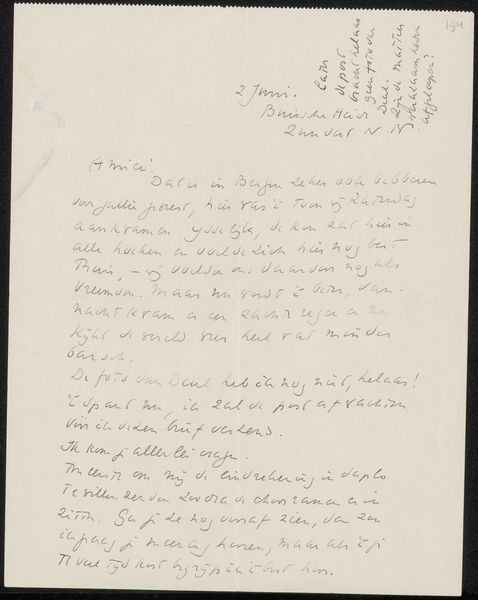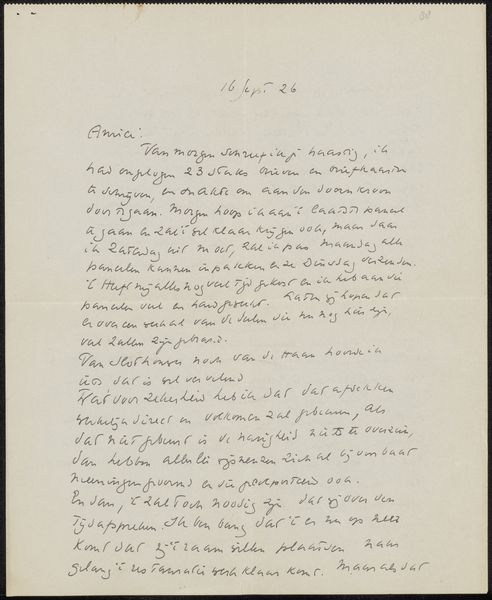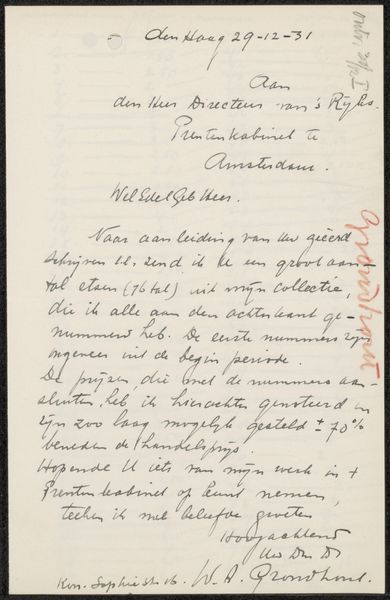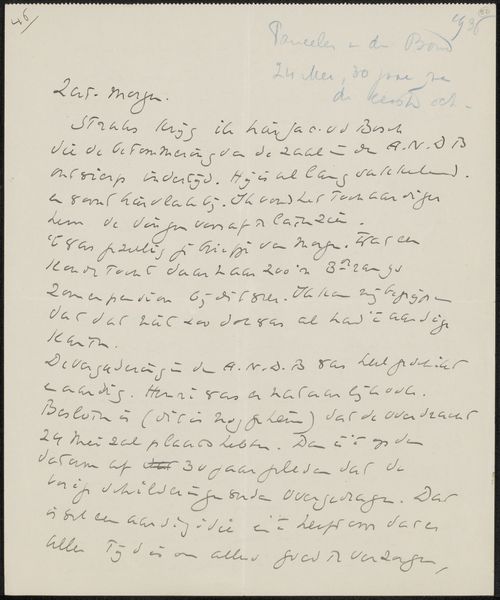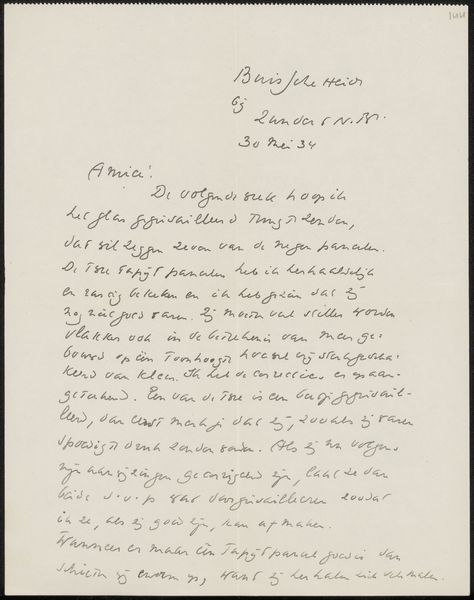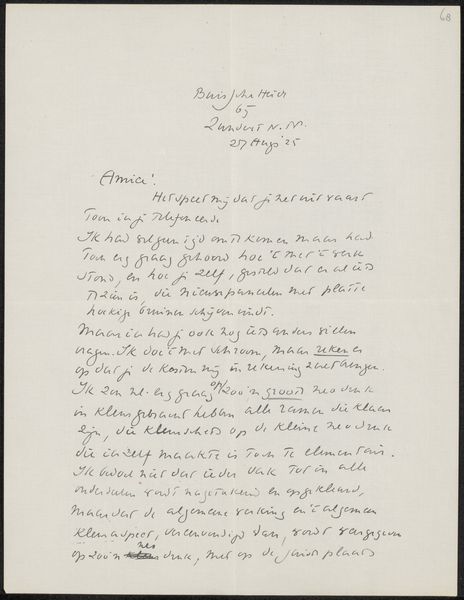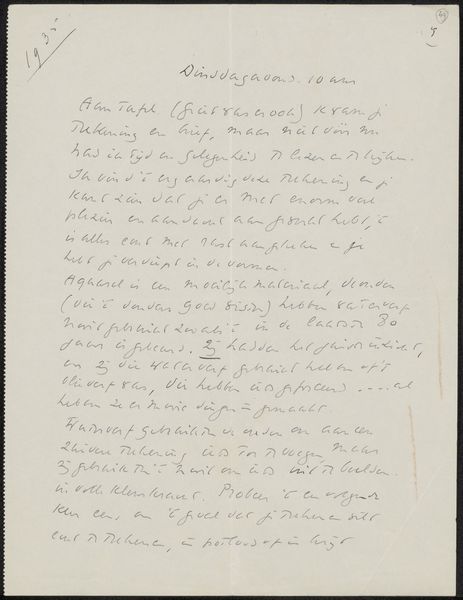
drawing, paper, ink, pen
drawing
paper
ink
pen
Copyright: Rijks Museum: Open Domain
Editor: This is "Brief aan Willem Bogtman," likely from 1937 to 1939, by Richard Nicolaüs Roland Holst. It's ink on paper—a handwritten letter, it seems. There's something really intimate about seeing someone's personal correspondence like this. What strikes you about it? Curator: What interests me immediately is thinking about the context of its creation. Late 1930s—the shadow of fascism is lengthening across Europe. Roland Holst, though a socialist, came from an elite background, which creates inherent tension in his life and work. Can we read any of that unease, that push-and-pull, in the very *act* of letter-writing? Is it a deliberate attempt at connection in a fractured world? Editor: That's interesting, the idea of letter writing as resistance. Curator: Exactly! The choice of script, the personal address... it all pushes back against the looming, impersonal forces of totalitarianism. Roland Holst's socialist beliefs likely informed his approach to art and life, seeing art as a vehicle for social change and justice. What does choosing to communicate in such an old-fashioned way express about his relationship with modernity and those disruptive politics? Editor: So you're seeing the act of writing itself as a political statement, even before considering the content? I guess I was just looking at it as a personal message. Curator: Not exclusively, but consider how even the smallest gesture can become politically charged in specific historical contexts. Even its physical preservation hints at that tension, wouldn't you say? We safeguard not just artwork here, but moments of quiet defiance. Editor: That makes me think differently about everyday objects and their potential to carry larger cultural meanings. Thanks! Curator: It's about asking who is this for, and who gets to decide on its worth. I think that tension also resides here.
Comments
No comments
Be the first to comment and join the conversation on the ultimate creative platform.
